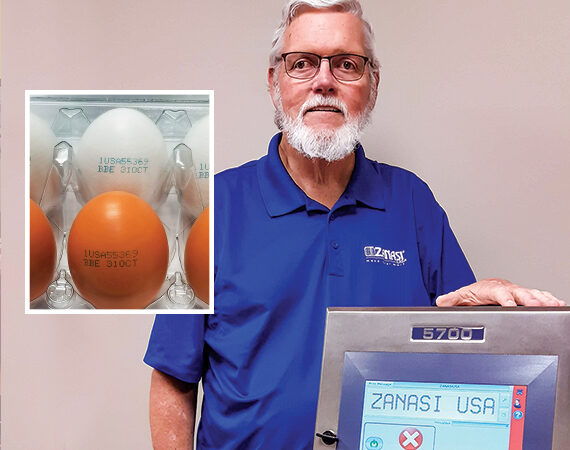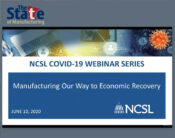In 2013, Gary O’Hearn identified what he thought was a perfect employment opportunity with the Brooklyn Park office of Zanasi USA.
Founded by Gianni Zanasi in Modena, Italy in 1978, the commercial inkjet printer manufacturer moved overseas to Modena’s sister city St. Paul in 1995 to take advantage of the larger American marketplace. But without an America-specific business plan and corporate structure, the company’s sales floundered.
Its search for new leadership caught the attention of 60-year-old O’Hearn, who had been making a living as a management consultant but was looking for a new challenge. With abundant managerial experience at companies like Hughes Aircraft/Raytheon and General Dynamics, O’Hearn saw the opening for a branch manager as the “perfect opportunity” to take the reins from an absentee owner who knew he had a good product and business model but needed someone to take charge.
The needs of Zanasi USA meshed well with O’Hearn’s personal goals. Zanasi had been trying to direct the company remotely from Italy but without a firm understanding of American business practices.
Although he had no experience with industrial inkjet printing, O’Hearn knew Zanasi USA would benefit from “an experienced leader who could assess the needs of the company, strategize the future, and implement the changes necessary to be financially successful. I had previous experience in business turn-around situations. It was now my time.”
The DNA of Zanasi – Listening to customers
Zanasi founded his company after ceramic tilemakers in Italy approached him about using inkjet technology to mark their tiles in unique ways. Before long, Zanasi’s inkjet printers were being used for purposes way beyond tiles—logos, bar codes, sell-by dates and more were printed onto products ranging from packaged food to lumber.
As businesses everywhere have transitioned to this automated and more efficient way of labeling their products, Zanasi USA is one company among many that manufactures and markets industrial printers to a huge global market. After opening in Minnesota, it opened additional branch offices in China and Spain and now sells printers in some 60 countries on five continents.
What these printers do
Inkjet industrial printers can print on virtually any surface. Different technologies allow for specialized print size, speed, and ink type. Generally, the product arrives at the printer on a conveyer system that then triggers an electronic eye to activate the printer. Invoice information, barcodes, logos, QR codes and more are easily printed on boxes and packages; but more diverse products like hoses, pipes, pallets, canned foods—even eggs—and bags of cement can be marked with inkjet print. Zanasi printer systems range in price from $1,800 to $20,000. The machines themselves are fairly small and are shipped via UPS, FedEx, and LTL 3PL (Less Than Truckload—Third Party Logistics).
O’Hearn says part of his mission was to infuse Zanasi USA with a culture aimed at American sales. “The company previously didn’t understand the marketing culture,” he says. “They didn’t understand the employment culture. They didn’t understand the employment laws.”
His team conducted a SWOT (strengths, weaknesses, opportunities, and threats) analysis, updated procedures and processes, implemented new personnel changes, and instituted a command focus on growth.
Within a year of O’Hearn coming aboard, Zanasi, still the company’s sole owner, named O’Hearn chairman of the board, removing himself from the position. Jason Spangler, the company’s most senior employee, was named board secretary.
Today O’Hearn and Spangler, as president and VP of operations, lead the company along with Todd Fox, VP of sales. They communicate regularly with the home office in Italy about marketing and technology, but Zanasi has allowed them to operate the business independently. It has been repaid by seven years of continuous growth.
In 2014, O’Hearn relocated the company to Maple Grove where he continues to operate his $3 million operation with two technicians, three sales people, a customer service agent and an office manager—all of whom are cross-trained to meet customers’ needs. Third-party partners represent half of the company’s business. Revenue streams include systems, inks, parts, repair, maintenance contracts, and installation and design services.
While larger competitors are bringing prices down on inkjet printers, Spangler says, “Customers aren’t really aware that while the price tag may be down on the front end, it is made up on service. We’ve always focused on service. We answer when someone calls, we offer multiple solutions. Larger organizations can promote more, but as a smaller company, our products are designed differently: simple, and easy to service.”
O’Hearn emphasizes customer service. “It is very rare that a call is not answered by a live person during normal business hours. Over 90 percent of the time, repairs are received, evaluated, and quoted to the customer within 48 hours.” Spangler adds that 92 percent of the calls received for tech support are solved over the phone.
Joel Scalzo, a business development consultant at Enterprise Minnesota, has worked with Zanasi USA’s leadership team. He recognizes its need to grow revenue and to penetrate the market, but he sees countless applications for the printers in just about every area of manufacturing. Scalzo is impressed by the company’s strong focus on client satisfaction. Not only can the printers help manufacturers identify and brand their products, but through integration, they help track a company’s critical data as well.
“Lots of inkjet companies don’t like to get involved with integration,” Scalzo says. But for Zanasi USA, integration options are just another part of customer service.
“From a supervisor’s PC,” O’Hearn says, “he or she can send information to a printer, and once the product is printed, data is loaded to a main computer where enterprise resource planning (ERP) software processes and sorts the data for inventory, record-keeping, ordering, and other applications.” Integrating the printer with ERP software makes data management and reporting more accurate and efficient.
And the integration factor brings new customers to Zanasi USA. When companies decide to upgrade or change out their technology, Zanasi USA is attentive and responsive to their needs. O’Hearn says implementing new technology when upgrading is cost saving in the long term. “We identify the benefits as Total Cost of Ownership (TCO).
Zanasi USA prides itself on having the lowest TCO in the industry. Every part on every system can be replaced. The competition’s modular systems require more expensive repair costs.”
O’Hearn emphasizes that Zanasi USA’s equipment, all manufactured in Italy, “is designed and built with Italian ingenuity.” Think Ferrari. Think Maserati. Both of which also hail from Modena, Italy.
After seven years with the company, O’Hearn’s mantra about business and marketing applies both to his personal goal of finding his “perfect opportunity” and the continued growth of Zanasi USA. “Our value is that we bridge the gap between ‘I wish we could’ and ‘Look what we did!’”
…
Featured story in the Summer 2020 issue of Enterprise Minnesota magazine.


